JR Day house, looking southeast from Roxboro and East Main Streets, 1895
The James R Day house took up most of the southern 300 block of East Main St. As labeled on the Sanborn map below, it was even noted as "Central Hotel." I haven't read any other reference to this, and the label is absent in subsequent years.
Sanborn Fire Insurance Map of the 300 block of East Main St., 1902.
Day received the substantial parcel on which this house sat in a conveyance from J.E. Day on March 26, 1875. By its appearance, my guess is that it was built in the 1880s. Day was a tobacco manufacturer.
Below, the Day house from the rear, as well as the First Presbyterian Church to the left, and the barely-visible steeple of St. Philip's to the right.
Looking north, 1899.
(Courtesy Duke Archives)
Day and his wife conveyed the house to Frank L. Fuller, Sr. and his wife Lillian on August 24, 1909. Fuller was an attorney - as the deed refers to the house as the residence of Frank Fuller, it seems logical that Fuller and his wife rented the house prior to purchase.
In 1917, Fuller subdivided the land, and the house was demolished.
1917 subdivision plat - you can see the outline of the house.
The Durham Sun building, the Astor Theater, a Freemason's Lodge and a service station were constructed on the property.
(Courtesy Duke Archives)
Fraternal organizations were omnipresent in Durham during the late 1800s and early 1900s - Elks, Knights Templar, Odd Fellows, and others, including three branches of Freemasons. I've been unable to determine which branch of the two white-affiliated Masons built the building on the southeast corner of Roxboro and E. Main. I think the lettering ("AF & AM") stands for "Ancient Free and Accepted Masons". On the side of the building are the letters "B.P.O.E." If anyone has any insight into that, let me know. [Thanks to RWE, below, who mentions that this stands for 'Benign Protective Order of the Elks.' If I'd looked back at my own post about the Temple Building, I would have realized this. This quite interesting, as I have no record that the Elks were housed here.]
It appears that this building housed two lodges of the Masons - the Durham and Eno. There is a notation in Jean Anderson's book that the Eno Lodge was organized around 1860, but that the Doric Lodge (another lodge, evidently) was the oldest fraternal organization in Durham.
A reader supplied the following additional information from the "History of Durham Lodge Number 352" compiled by R.D. Love 1986 and "Historical Sketch of Durham Lodge No. 352 A.F. & A.M." by Irving E. Allen, 1946. I need to integrate it better into this post, but here it is (I've added hyperlinks).
"June 14, 1876: the Durham Lodge has its first organizational meeting (meeting place uncertain); officers are elected, with James H. Southgate elected 'Worshipful Master.' Several (6?) of the members were from the Eno Lodge, which was considered to have 'very poor leadership and was in a
more or less dormant state.'
December 6, 1876: the Durham Lodge receives its charter. Early lodge leaders included Julian Carr, James Southgate (previously of Hillsborough), E. J. Parrish, L.T. Smith, and others.
The lodge's first meeting place is unrecorded. The minutes of the April 10, 1877, lodge meeting state that Julian Carr and William T. Blackwell agreed to rent a room to the lodge for $150 annually. This room may have been in the Bull Durham tobacco factory. By 1881, membership was reported at 39 men.
After some time, the lodge meetings moved to the Wright Building on the SW corner of Main and Corcoran Streets. Then it moved to the upstairs of the building that housed T.J. Lambe's men's clothing store. Then it moved to the "upper stories" of the Sneed-Markham building at the SW corner of Main and Mangum Streets, where the rooms were shared with the Pythian Order).
In 1924, plans were (again) started for a permanent meeting place/temple for the lodge. A site at the corner of Main and Roxboro Streets was selected, and funds were raised and the three-story building built. During the 'Great Depression', in 1938, the building was lost/forfeited by the Masons to the mortgage holder (an insurance company); the property was then purchased by the county for use as its health department.
After losing the building, the lodge temporarily moved to the Temple Building. In the 1940s, the Masons purchased 'a very desirable lot' on Mangum Street, but no building apparently was ever built at the site. In 1953, they finally decided to move and purchased and renovated the 'abandoned' 1913 Lakewood Methodist Church on Palmer Street."
Information about the Mason's actual use of the building, perhaps appropriate for a rather secretive group, is scant. By the late 1930s, the Masons were still in the building, upstairs, and a car dealership that had been located on the ground floor had moved out of the building to Morgan St.
Looking southeast, ~1930s.
(Courtesy Duke Archives)
After acquiring the building - sometime between 1938 and 1941, the Health Department, in a popular 1940s re-do, filled in the 1st floor windows with glass block.
Looking southeast, 1950s.
(Courtesy Durham County Library)
The Health Department, looking southwest from E. Main St., 1966.
(Courtesy Durham County Library)
The Health Department moved down the street to the former Sears and Roebuck. The county bought that property in 1972, but I'm not sure if the Health Department moved soon after that, or later. The Eligibility building then took on its current name, by housing the eligibility section of the Social Services Department.
Below, the building in 1986, looking south-southeast from Roxboro.
(Courtesy Durham County Library)
The building has been empty since 1992. The county sold the building through an open bid process in March of 2007 to David Revere - a new developer on the scene who recently moved from Los Angeles to Chapel Hill - who intends on converting the upper floors to office space (although I've also heard residential,) and the first floor to a restaurant.
It will be great to see this building re-occupied with some new life - and perhaps even better to help bridge the east-west divide at Roxboro with some activity on this corner. I don't know the interior condition, although I've heard there is a sizable auditorium in the building. I hope he keeps the air raid siren on top of the building (although I hope he chooses ignore American Tobacco's example of unnecessary horn soundings for kitschy effect.)
He also bought the lot next door, the former location of the Astor Theater, which had become a storefront church - and another abandoned building - before the county tore it down. I hope that he'll be able to build an infill building on that lot, which would help re-bridge the streetscape with the former Durham Sun Building. The county's parking deck (complete with helipad) behind the buildings did not come with the deal.
Looking southeast, 2006.
300 East Main, 05.21.11
---
This house was torn down in the 1910s, and the land was used to develop several commercial structures - including the row of the Eligibility building, the Astor theater, and the Durham Sun - during the 1920s. Today's post will focus on the Sun building.
Looking south, 1926.
Durham has had series of newspapers, beginning with Caleb Green's The Tobacco Plant in 1872, which later became the Durham Globe. Amongst the series of papers started in the subsequent decades was the Durham Sun, begun in 1889 by James R. Robinson and owned and operated by him until 1910. He was known to write columns under the pseudonym-of-sorts "Old Hurrygraph."
The Sun was evidently a paper with a Conservative Democratic Party slant, at least in its early years, giving racially polarizing commentary in the 1892 elections that was critical of the populists who were advocating for the rights of African-Americans.
This building was contructed in the mid 1920s for the Sun. However, it was not used for long - in 1929, the Morning Herald's owners took control of the Sun and operations were consolidated at the Herald's Market St. offices.
In 1946, the building was purchased by the Public Service Co. of North Carolina, which utilized it for office space through the late 1970s.
Looking southeast, 1970s.
Sometime thereafter, it was used by the Salvation Army.
As of 2007, it is under private ownership "Diesel Productions, LLC") and has been refurbished.
Looking southeast, 2007.
There is residential space upstairs, including a cool back deck.
Looking southeast, 2007.
In January 2011, the wonderful first floor space opened as the Old Havana Restaurant - I had seen this space several years ago and thought it had amazing potential; the revitalization of downtown has caught up to it.
310 East Main St., 05.21.11, with patrons heading for the restaurant mid-Saturday afternoon.
The interior captures the potential of the huge windows and coffered ceiling - with the paint, fans, and palms, it does feel like a small trip into Havana, New Orleans, Miami, Nassau, or similar (since I've never been to Havana.)
Interior view of the restaurant, 05.21.11
Looking south at the Central Filling Station, late 1920s. The Johnson Motor Company is out of frame to the left.
(From "Images of America: Durham" by Stephen Massengill)
Johnson Motor Company, 1968
(Courtesy Noell Nicholson Schepp)
The former Johnson Service Station, looking south-southwest, 2007.

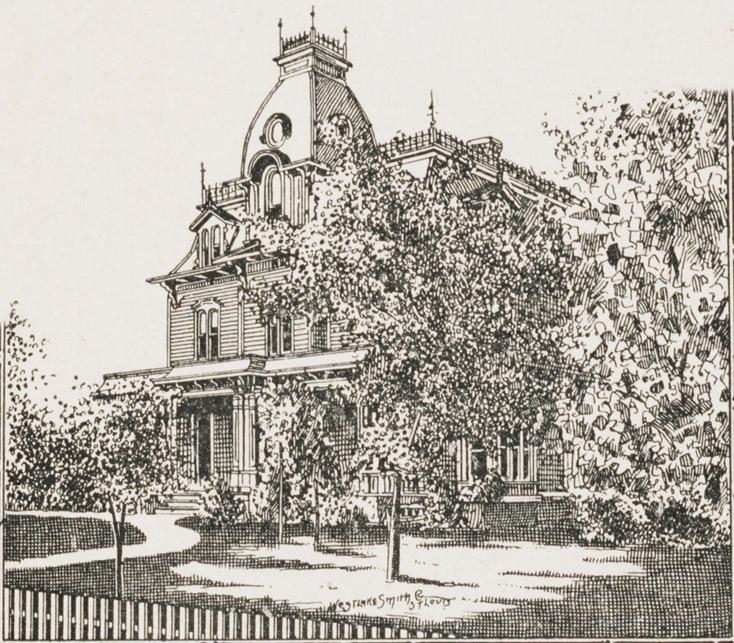
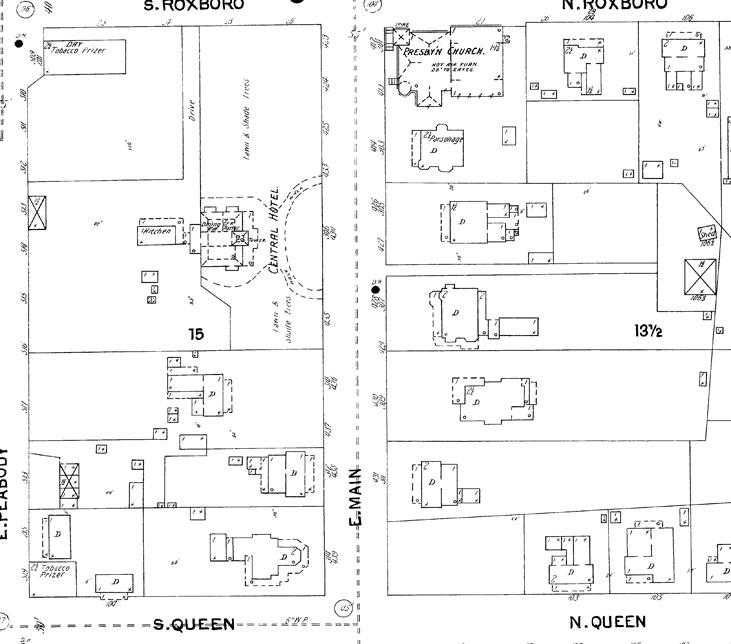
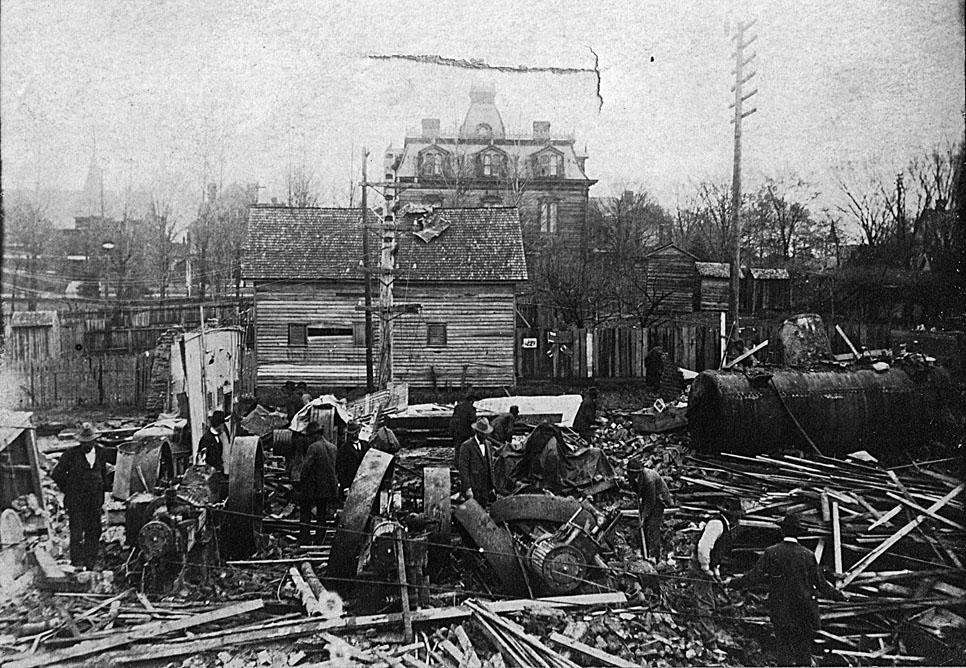

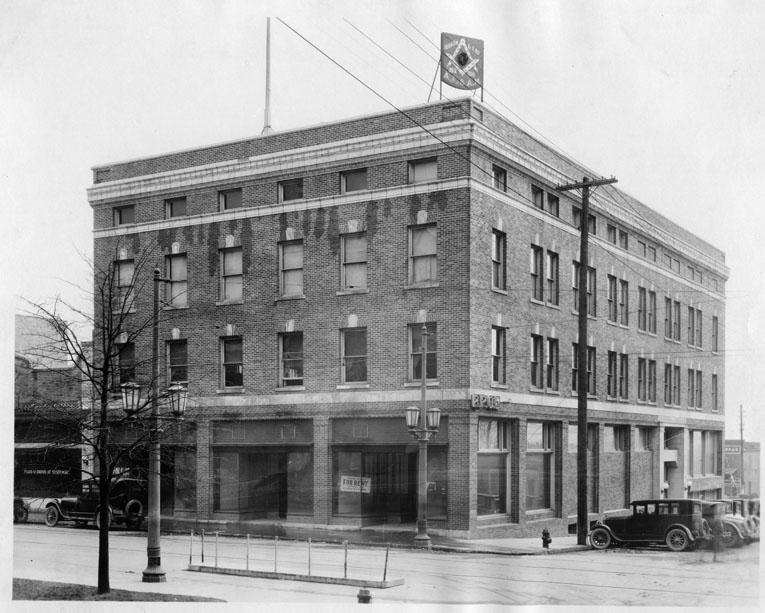
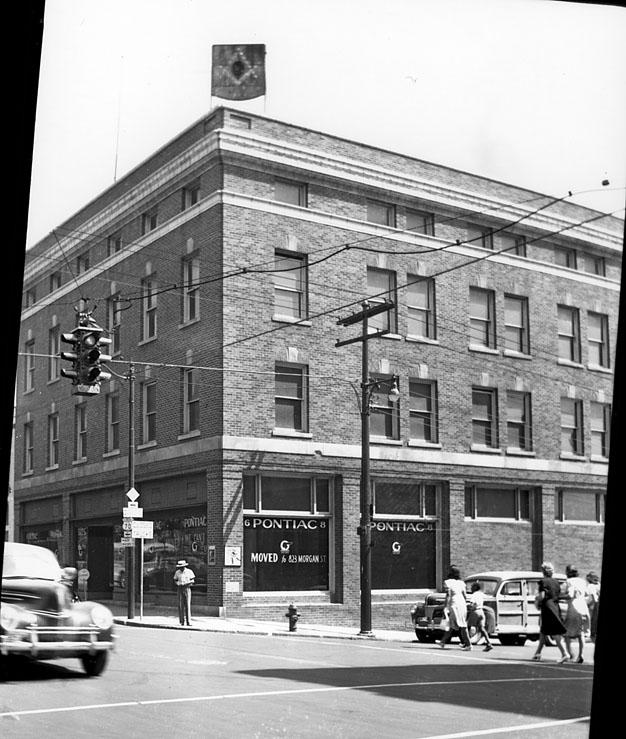
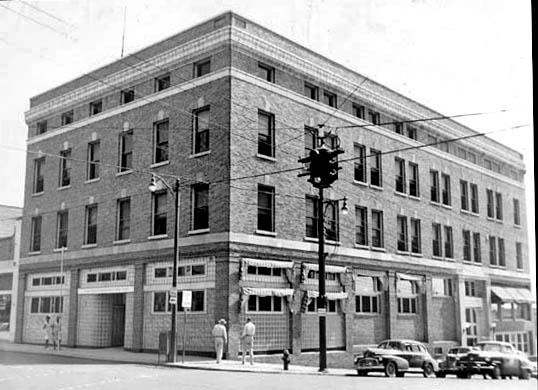
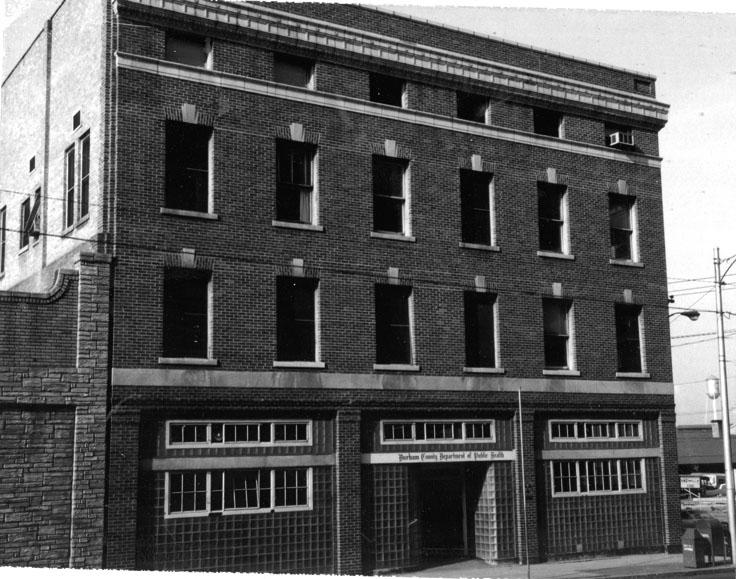
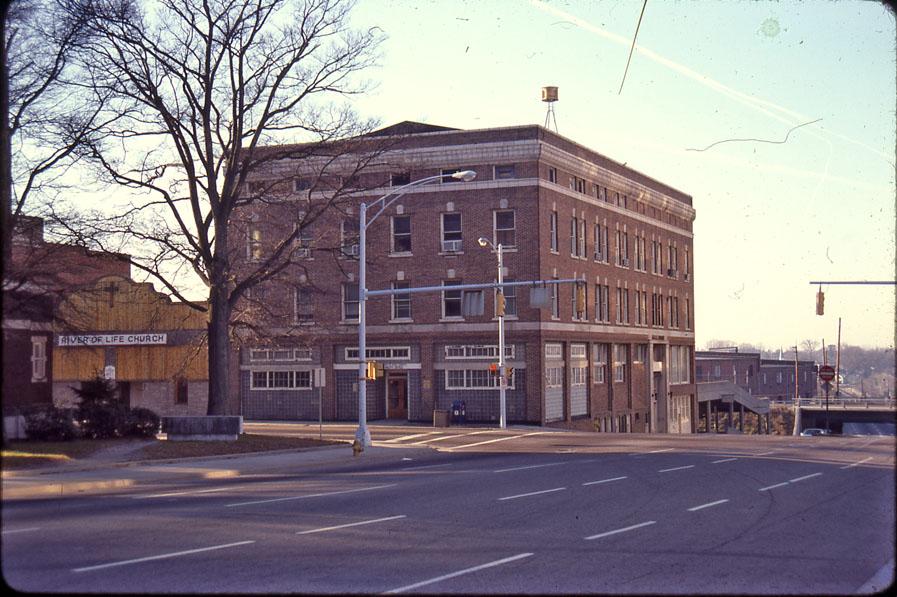
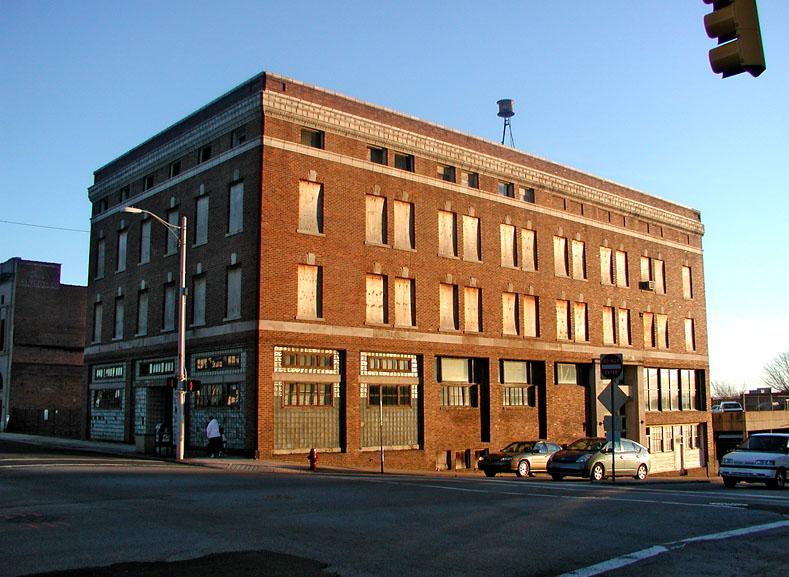
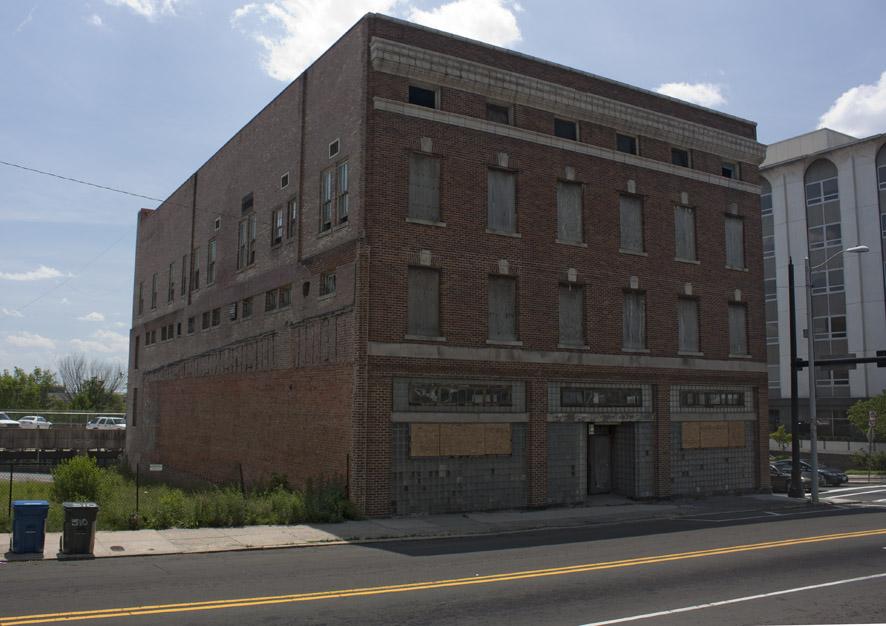

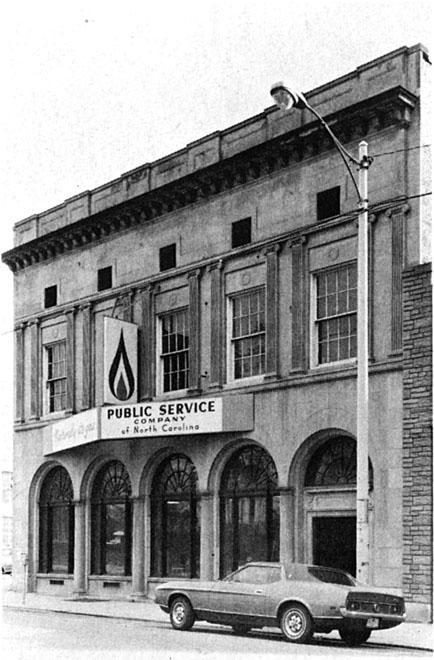
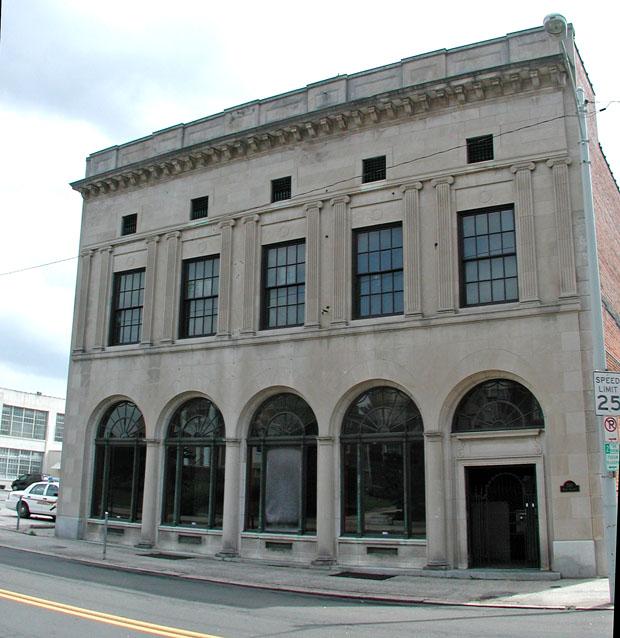
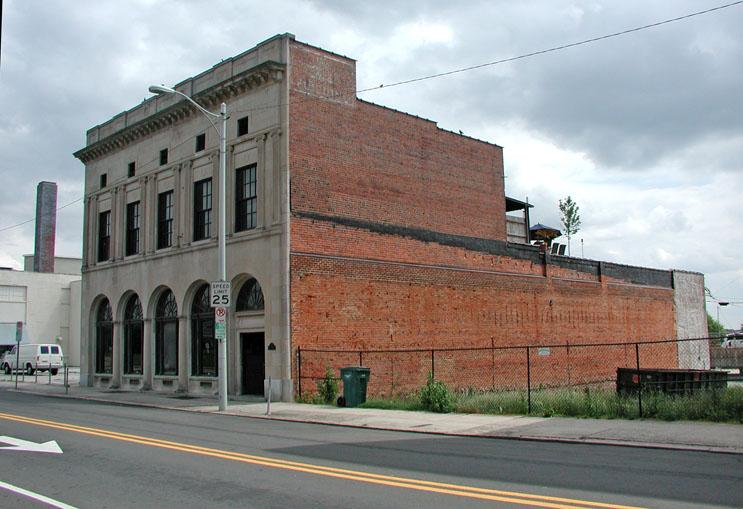
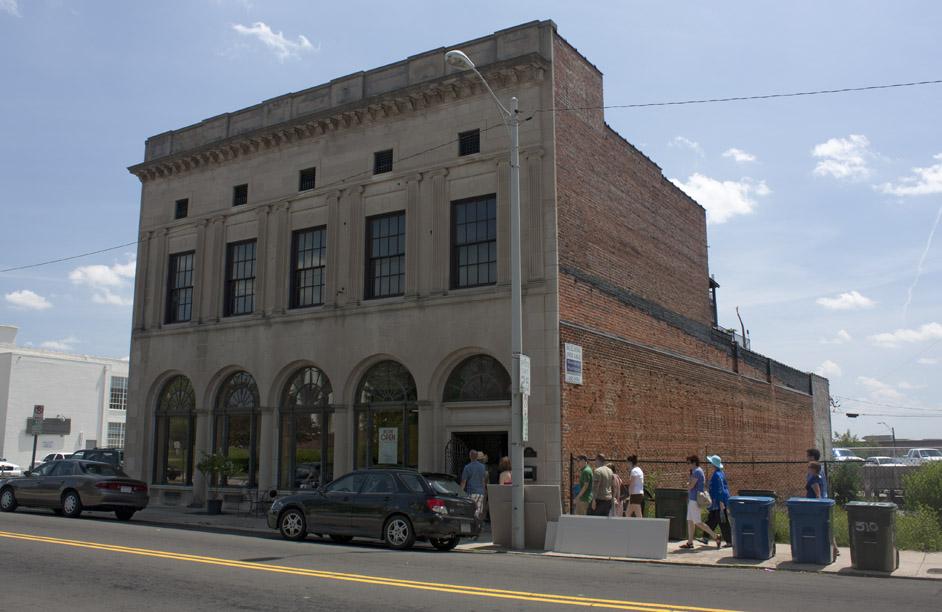
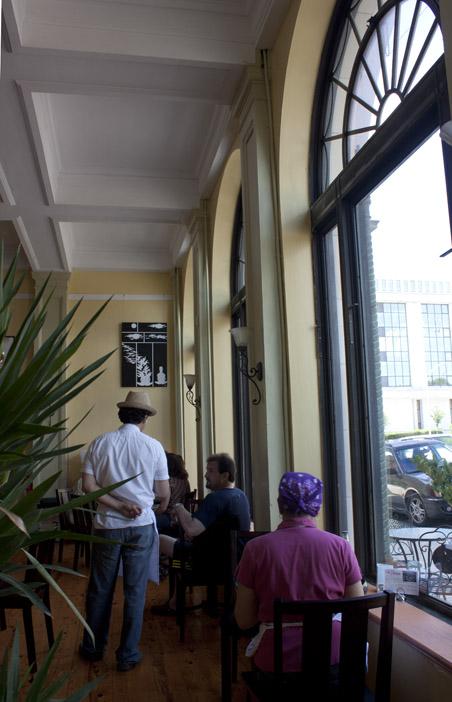
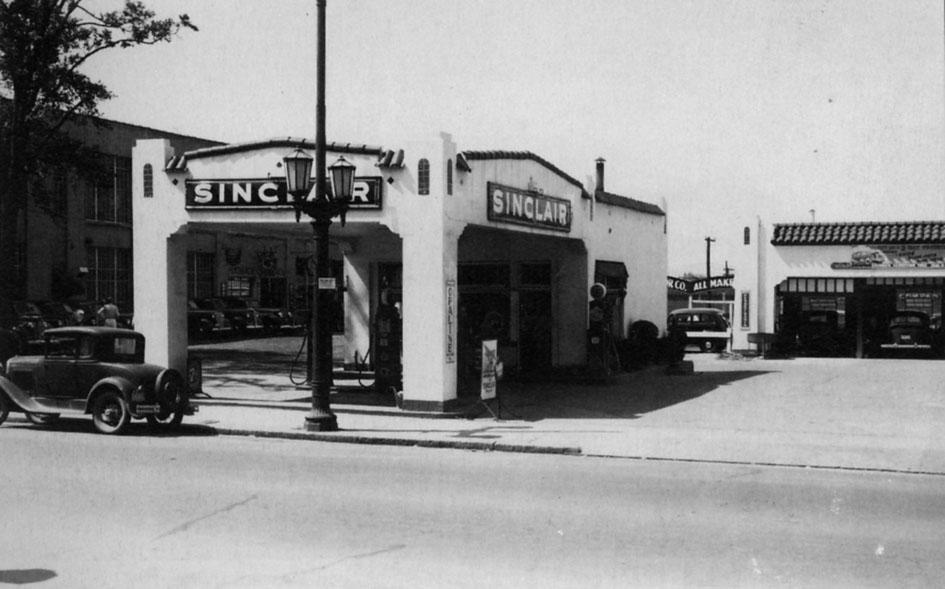
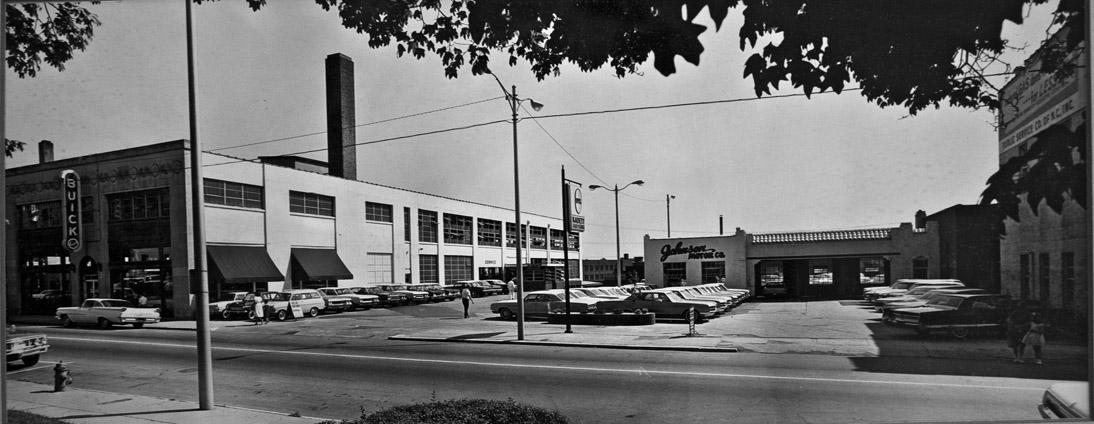
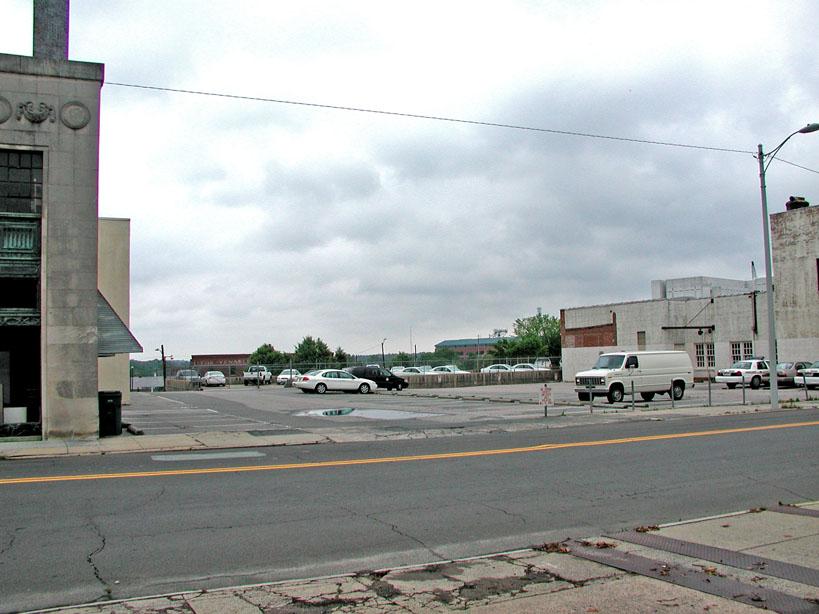
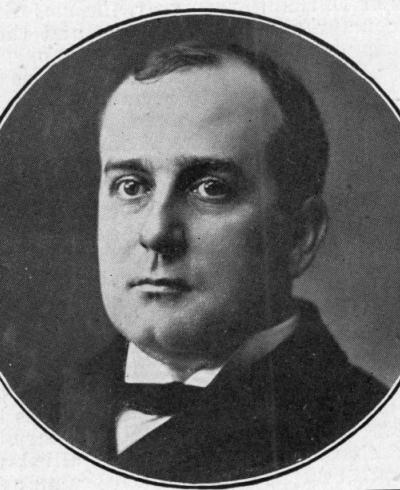
Comments
Submitted by robby (not verified) on Thu, 12/29/2011 - 9:52am
WHHT radio has studios on the 2nd floor from about 1946-1949.WHHT was owned by Herald Thoms.The station's transmitter was one mile south of the city limits on Alston ave on the Collier farm.Frequency was 1580kc at 1000 watts. Transmitter moved to a lot locates at Omah St and Bertland Av. Frequency moved to 1590 kc at 5000w.Station was bought by WSSB (1490) and turned off about 1949
Add new comment
Log in or register to post comments.